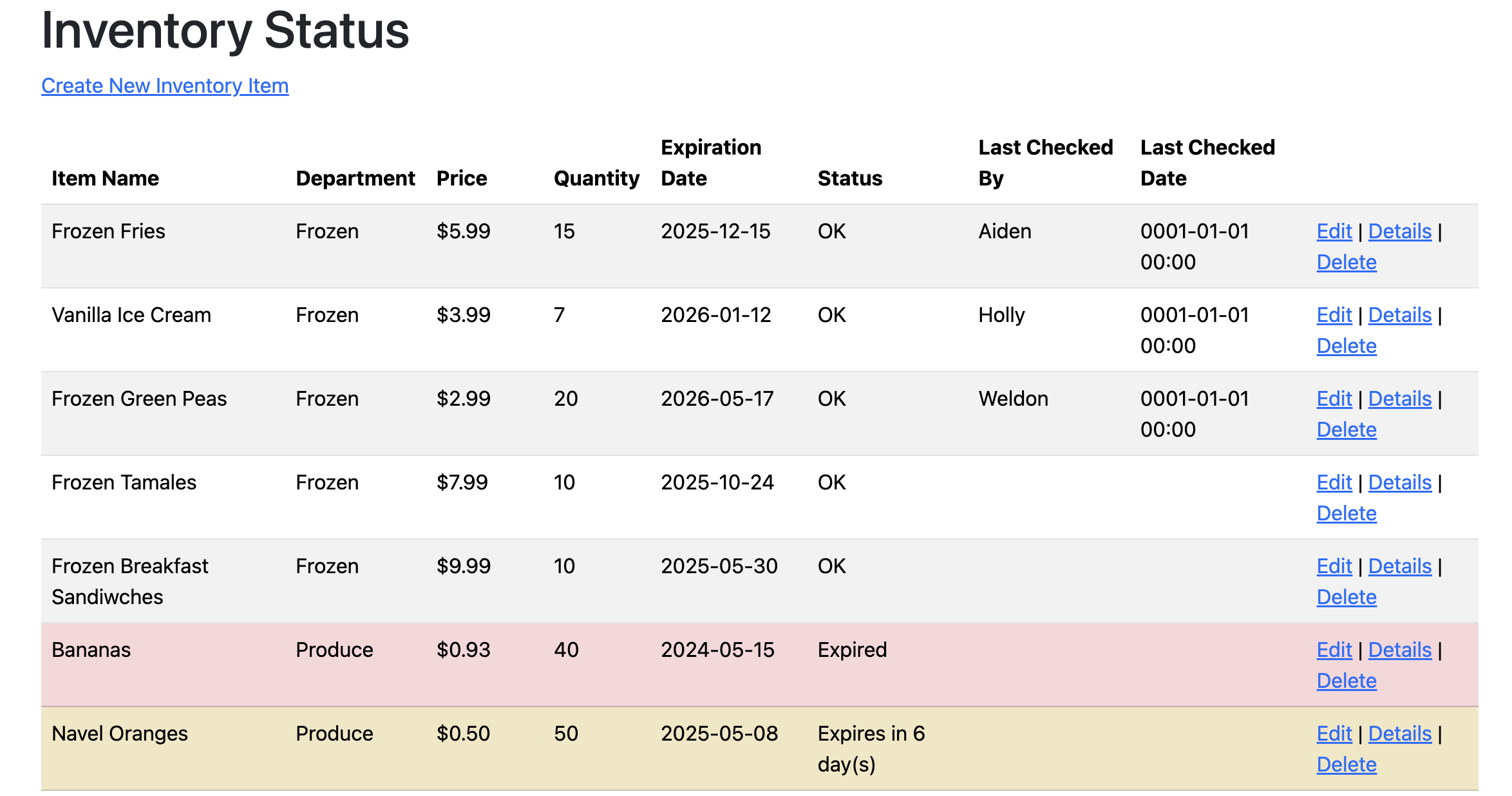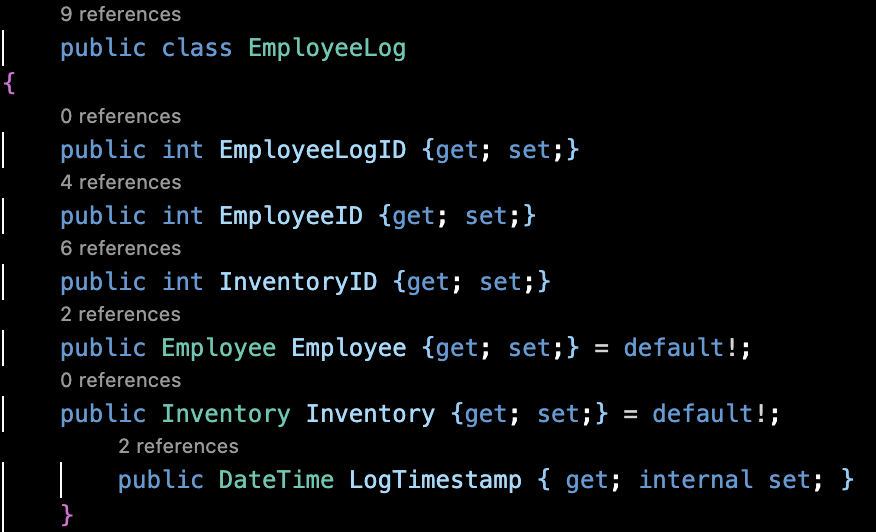ASP.NET Inventory Management System
Category: ASP.NET
Gallery
This project is a culmination of all of my learned C#/ASP.NET Core skills. Model-Binding, Bootstrap, EF Core, and Advanced data-modeling. This is a showcase of my design for a piece of retail software made using ASP.NET.
The software is meant to solve the problem of shrink management in a retail environment.
For those unaware, "shrink" refers to any items that are damaged or out of date. They are unable to be sold, meaning they "shrink" the inventory that can be sold. It is a very important part of a retail workers job to check for shrink as often as possible, scan it out, and take it off the shelf. This ensures customers do not buy out-of-date products, keeping them satisfied.
The problem is this: checking for shrink is an extremely tedious process. An employee must scan through each individual item, looking for its date, making it a very difficult and time-consuming process.
To add insult to injury, it is often so tedious, that the employees will sometimes forgo this process due to time constraints or simple exhaustion. This is bad news, as this can cause customers to purchase out of date products without their knowledge, leading to bad PR.
This is where my software solution comes in: The Shrink-Tracker. The way it works is by storing each batch of items' expiration date in a database that can be easily queried and updated by the employee responsible for inventory management.
There are three objects in this relationship that I modeled. The Employee Model, the Inventory Model and the EmployeeLog Model.
-The Employee Model defines basic info about the Employee.
-The Inventory Model gives details about an item in the inventory.
-Finally, the EmployeeLog Model shows the last time an Item was checked in the inventory system and by who.
The code will be on my Github by the end of this week, but I have pictures above to show what the final result is like. Sometime in the future, I would like to make a fully-working, extremely detailed demo for users to experiment with. But for now, I will simply showcase my idea in writing.
The software is meant to solve the problem of shrink management in a retail environment.
For those unaware, "shrink" refers to any items that are damaged or out of date. They are unable to be sold, meaning they "shrink" the inventory that can be sold. It is a very important part of a retail workers job to check for shrink as often as possible, scan it out, and take it off the shelf. This ensures customers do not buy out-of-date products, keeping them satisfied.
The problem is this: checking for shrink is an extremely tedious process. An employee must scan through each individual item, looking for its date, making it a very difficult and time-consuming process.
To add insult to injury, it is often so tedious, that the employees will sometimes forgo this process due to time constraints or simple exhaustion. This is bad news, as this can cause customers to purchase out of date products without their knowledge, leading to bad PR.
This is where my software solution comes in: The Shrink-Tracker. The way it works is by storing each batch of items' expiration date in a database that can be easily queried and updated by the employee responsible for inventory management.
There are three objects in this relationship that I modeled. The Employee Model, the Inventory Model and the EmployeeLog Model.
-The Employee Model defines basic info about the Employee.
-The Inventory Model gives details about an item in the inventory.
-Finally, the EmployeeLog Model shows the last time an Item was checked in the inventory system and by who.
The code will be on my Github by the end of this week, but I have pictures above to show what the final result is like. Sometime in the future, I would like to make a fully-working, extremely detailed demo for users to experiment with. But for now, I will simply showcase my idea in writing.

